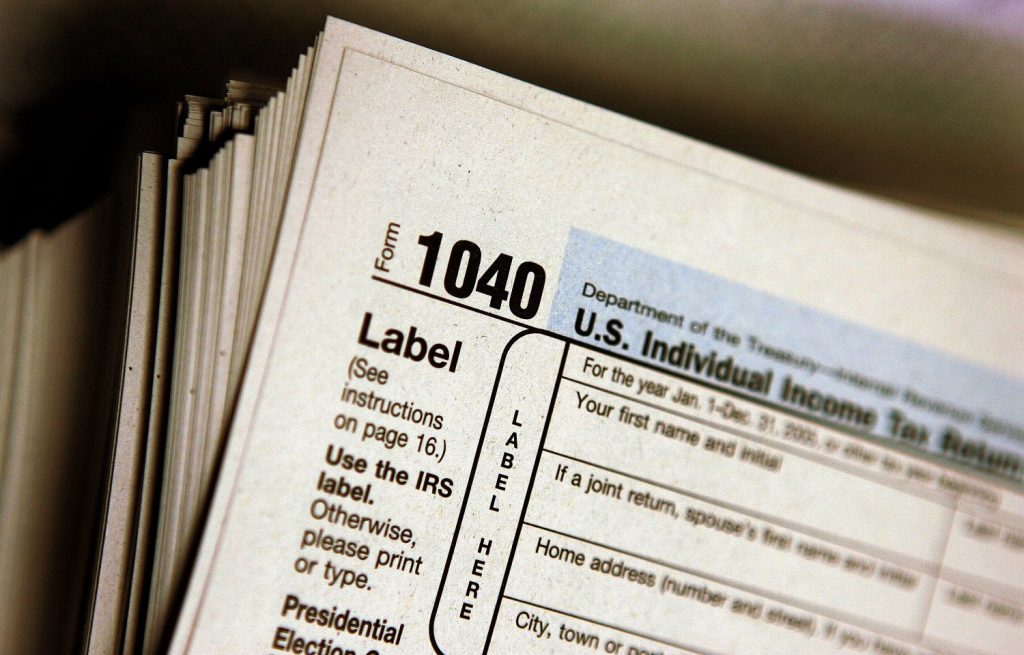For many people, filing taxes is a super stressful experience—it often feels like you’re giving away all of your hard-earned money!
One way you can help lessen the burden and offset the amount of money you owe is by searching for tax credits you qualify for every year.
Credits are not the same as deductions. While deductions reduce the amount of your income that’s subject to taxes, a credit actually reduces the tax itself.
Not every credit listed here will apply to your household, but it’s worth doing a little research (or chatting with your tax preparer) to ensure you’re getting the best deal this tax season.
1. American Opportunity Tax Credit
If you’re still in college or going back to school as an adult to finish your four-year degree, listen up: the American Opportunity Tax Credit might be for you.
This tax credit is available for any student who is in college for at least one academic semester per year and has expenses related to education—tuition, fees, books, etc. You must be at least a half-time student, and you can’t be convicted of any drug crimes. The credit is only applicable for your first four years of higher education.
The maximum annual credit you can get is $2,500 (that’s if you spent $4,000 on qualified education expenses). If this credit drops your tax bill to zero, you can get up $1,000 of this credit refunded to you.
The credit is available to students whose adjusted gross income is $80,000 or less ($160,000 for married couples filing jointly).
2. The Earned Income Tax Credit
The Earned Income Tax Credit is one of the more substantial credits out there, but it comes with some super strict requirements.
This credit was designed for working people who have low or moderate income. You do have to earn some income in order to qualify for this credit. Your investment income must be $3,400 or less for the year.
The maximum annual credit is $506 if you’re single, $3,373 if you have one qualifying child, $5,572 if you have two qualifying children and $6,469 if you have three qualifying children.
To get this credit, your income must fall within a certain limit: You must make less than $14,880 if you’re single with no kids, less than $39,296 if you have one child, $44,648 for two children and $47,966 for three children.
Those numbers are different if you’re married filing jointly, so be sure to visit the official Internal Revenue Service page about this credit to learn more.
3. Lifetime Learning Credit
The Lifetime Learning Credit is another tax credit offered to help offset the cost of higher education. Though this credit isn’t as big as the American Opportunity Tax Credit, it’s less restrictive. There’s no limit on the number of years you can use this credit, and it’s available to anyone pursuing any type of higher education, including courses to improve job skills.
The maximum annual credit is $2,000, which can get if you spend up to $10,000 on qualified education expenses per year. You’re only eligible for this credit if your modified adjusted gross income is less than $65,000 per year ($131,000 if you’re married and filing jointly).
Keep in mind: You can only apply one of the two education credits on this list.
4. Premium Tax Credit
The Premium Tax Credit helps individuals who bought health insurance through the Health Insurance Marketplace.
If you fall within the income requirements, were not able to get affordable coverage through an employer or you weren’t eligible for Medicaid, Medicare, CHIP or TRICARE, you may qualify for this credit.
5. Savers Credit
The Retirement Savings Contribution Credit—more commonly called the Savers Credit—rewards those who are saving for retirement.
You’re eligible for this credit if you are at least 18 years old, not a full time student and not claimed as a dependent on another person’s tax return.
Depending on your income, you can get 50 percent, 20 percent or 10 percent of your retirement contributions up to $2,000 ($4,000 if you’re married filing jointly). The maximum credit you can get as a single person is $1,000 per year.
Your income must fall within the IRS’s limits in order to get this credit, however. If you make more than $30,750 as a single person (or $61,000 married filing jointly), you’re not eligible for this credit (but that doesn’t mean you shouldn’t save for retirement anyway!)
6. Child and Dependent Care Credit
This tax credit is in place to help offset the cost of caring for others. For dependent children under the age of 13, this includes the cost of daycare and babysitters. But it’s also available to those who care for a dependent who is incapable of caring for themselves, no matter what their age.
However, you’re only eligible for this credit if you were working or looking for work.
If you qualify, this credit could cover up to 35 percent of your dependent care expenses, depending on your adjusted gross income. The IRS will let you claim $3,000 for one dependent and $6,000 for two or more dependents.
7. Residential Energy Efficient Property Credit
The government wants to reward you for making your home more energy efficient this year–pretty cool, right? The Residential Energy Efficient Property Credit is good for up to 30 percent of expenditures (including the cost of installation) you make on solar electric systems, solar water heaters, fuel cell property, small wind energy property and geothermal heat pumps.
There’s no dollar limit on this credit, but the home must be in the United States. It does not have to be your main home, either. This credit is available for existing homes and homes under construction.
Several of the credits mentioned above have the potential to overlap, depending on your situation. It’s best to review your options and choose the credit that would garner the most savings.















